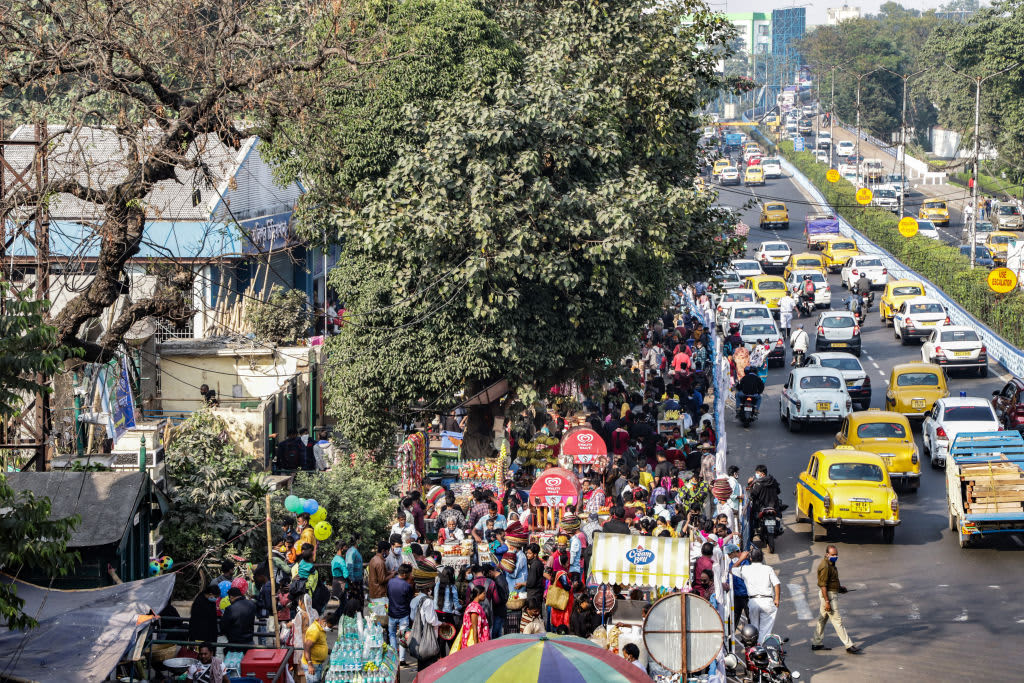
High traffic and a crowd observed outside of Alipore zoological garden on the first weekend of 2021 in Kolkata, West Bengal.
Jit Chattopadhyay | SOPA Images | LightRocket | Getty Images
India is set to overtake Japan as the world’s third-largest economy behind the U.S. and China by 2031, according to a recent report from BofA Securities.
The investment banking division of Bank of America previously predicted it would happen in 2028 but said Monday the economic shock from Covid-19 will push back the timeline by three years.
“We now expect India to emerge as the third largest economy in the world in 2031/FY32, from 2028 earlier, due to the Covid 19 shock,” BofA Securities economists Indranil Sen Gupta and Aastha Gudwani wrote in the report.
The researchers noted India should reach Japan’s nominal GDP in dollar terms in 2031 if it grows at 9% annually — assuming real GDP growth of around 6%, an average inflation rate of 5% and 2% depreciation. If growth touches 10%, then India can potentially top Japan by 2030, the report said.
India suffered an economic crisis due to last year’s lengthy lockdown to slow the spread of the coronavirus outbreak. Millions of jobs were lost, many of them permanently. While the economy is on the mend, ratings agency S&P said that India faces a permanent loss of about 10% of economic output compared with its pre-pandemic path.
Still, structural drivers of economic growth are strengthening, according to the BofA Securities report. They include deepening financial maturity, emergence of mass markets due to rising incomes and a forthcoming demographic dividend, which occurs when a country experiences accelerated growth due to falling fertility and mortality rates. Mass market refers to markets where goods are produced in large quantities for a mass of people.
Declining birth rates imply there are fewer people to support as they age. Also known as a falling dependency ratio, this trend allows countries to direct scarce resources to other areas that can speed up development. BofA Securities said a rising labor supply will pull India’s dependency ratio down in ten years. That is expected to help sustain high saving and investment rates.
The report predicted India’s skilled labor force would grow as large-scale, Covid-related job and income losses reverse once things return to normal, driven in part by rising employment in the services sector. The credit-to-GDP ratio, which is a proxy for financial maturity, is also expected to rise over the decade while the emergence of mass market is set to push down prices of goods.
Two new catalysts are expected to support the structural changes that can lead India’s economic growth, according to the report. First, the Reserve Bank of India has built up the country foreign-exchange reserves, which is likely to help stabilize the Indian rupee and prevent large depreciation of the currency during global shocks. It would also see greater portfolio inflows and is set to lower borrowing costs for Indian companies.
“Further, sustained RBI easing is finally bringing down real lending rates that have been a drag on growth since 2016,” the economists wrote, adding, “We continue to see financials as the primary beneficiary of the India growth story.”
A recent uptick in coronavirus cases in India has raised fresh concerns over a second wave of infection even as the country pushes on with its massive vaccination drive to inoculate some 300 million people in the current stage.
Source: CNBC
